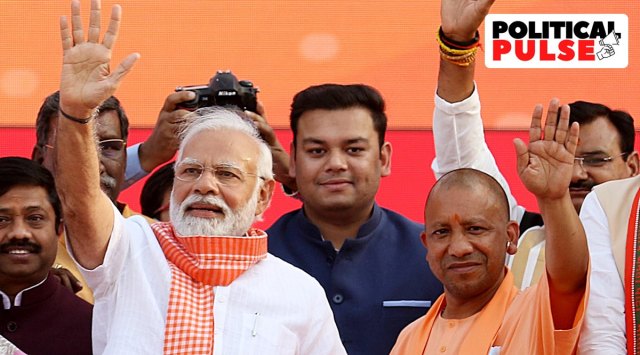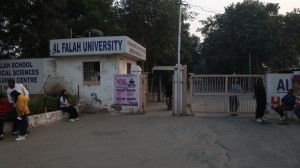To mobilise grassroots workers and monitor public outreach and organisational activities in each Lok Sabha constituency, the BJP has divided the country’s electoral map into clusters of constituencies, and deputed senior leaders along with Union ministers to tour these clusters, address public meetings and look after the party programmes. Each cluster includes 3-5 Lok Sabha constituencies, with leaders deployed in them as per a categorisation in three groups — A, B and C.

Leaders of the party’s national team, including Union ministers and former chief ministers of various states are in Group A. They will visit the constituencies under the cluster assigned to them and meet the public and BJP workers. Likewise, senior leaders of the party and MPs from other states are in Group B, whereas Group C has local party leaders of the respective states.
“Group C will work on the ground and organise party programmes. Group B will supervise these programmes and organisation matters during regular visits. Group A leaders are responsible for meeting workers of all organisational teams, holding public meetings, addressing grievances of local residents, analysing potential anti-incumbency, suggesting appropriate remedies and creating an atmosphere in favour of the party,” said a BJP leader.
He added that this new structure will become functional from May 30, when the party’s Mahasampark Abhiyan will be launched to mark the completion of nine years of the Narendra Modi government.
In UP, former Jharkhand chief minister Raghubar Das has been included in Group A for the cluster comprising four Lok Sabha constituencies including Domariyaganj, Gorakhpur, Kushinagar and Maharajganj. Rajya Sabha MP Krishan Lal Panwar is in Group B of the cluster, while Gorakhpur vice-president Devendra Yadav is in Group C.
Former Gujarat deputy CM Nitin Patel is in Group A for a cluster of five constituencies — Kairana, Muzaffarnagar in UP, as well as contiguous Tehri Garhwal, Haridwar and Garhwal in Uttarakhand. Rajya Sabha MP Vivek Thakur is in Group B, while former Bulandshahr district president D K Sharma is in Group C of the same cluster.
Story continues below this ad
Former Uttarakhand CM Trivendra Singh Rawat has been included in Group A of a cluster of five constituencies — Bansgaon, Deoria, Ballia, Azamgarh and Salempur. Jamal Siddiqui, the national president of the BJP’s minority wing, is in Group B, while Jai Prakash Shahi, former district president of Kushinagar, is in Group C.
Madhya Pradesh Cabinet minister Mohan Yadav is in Group A for four seats — Gonda, Kaiserganj, Sitapur and Bahraich, with Almora MP Ajay Tamta is in Group B. In Group C of this cluster is former Barabanki district president Awdhesh Srivastava.
Another Madhya Pradesh minister, Vishwas Sarang, is in Group A for a cluster comprising Kheri, Mishrikh, Dhaurahra and Hardoi. The BJP’s Mahila Morcha national general secretary, Deepti Bhardwaj, is in Group B, while former Lucknow district president Ram Niwas Yadav is in Group C.
BJP Yuva Morcha national president Tejasvi Surya is in Group A for the cluster of five seats — Gautam Buddh Nagar, Ghaziabad, Baghpat, Bulandshahr and Meerut. Former Jammu & Kashmir minister Devender Singh Rana is in its Group B, while western UP region’s general secretary Hariom Sharma is in its Group C.
Story continues below this ad
Prominent leaders, who are in Group A of other clusters in UP, include R K Singh, Ashwini Vaishnaw, Narendra Singh Tomar, Jitendra Singh, Meenakshi Lekhi, Annapurna Devi, S P Singh Baghel (all Union ministers), party national vice-president and UP in-charge Radha Mohan Singh, and BJP national spokesperson Shahnawaz Hussain.
“These leaders will be active in the assigned clusters for up to eight months. After that, they will look after political work in their home states. Many of them will have to prepare for their own elections,” said a party leader.
The leader added that regular visits by such senior leaders including Union ministers is expected to keep grassroots party workers active and to ensure the presence of the BJP flag in every village and town.
He also added that the senior leaders will oversee the practices of the party in UP and suggest ideas from their own experience in their home states, to strengthen the BJP in UP. “Similar clusters have also been made for other states. For example, UP’s deputy ministers and ministers are in Group A of states like Odisha, West Bengal, Telangana, Madhya Pradesh etc,” he said.

































